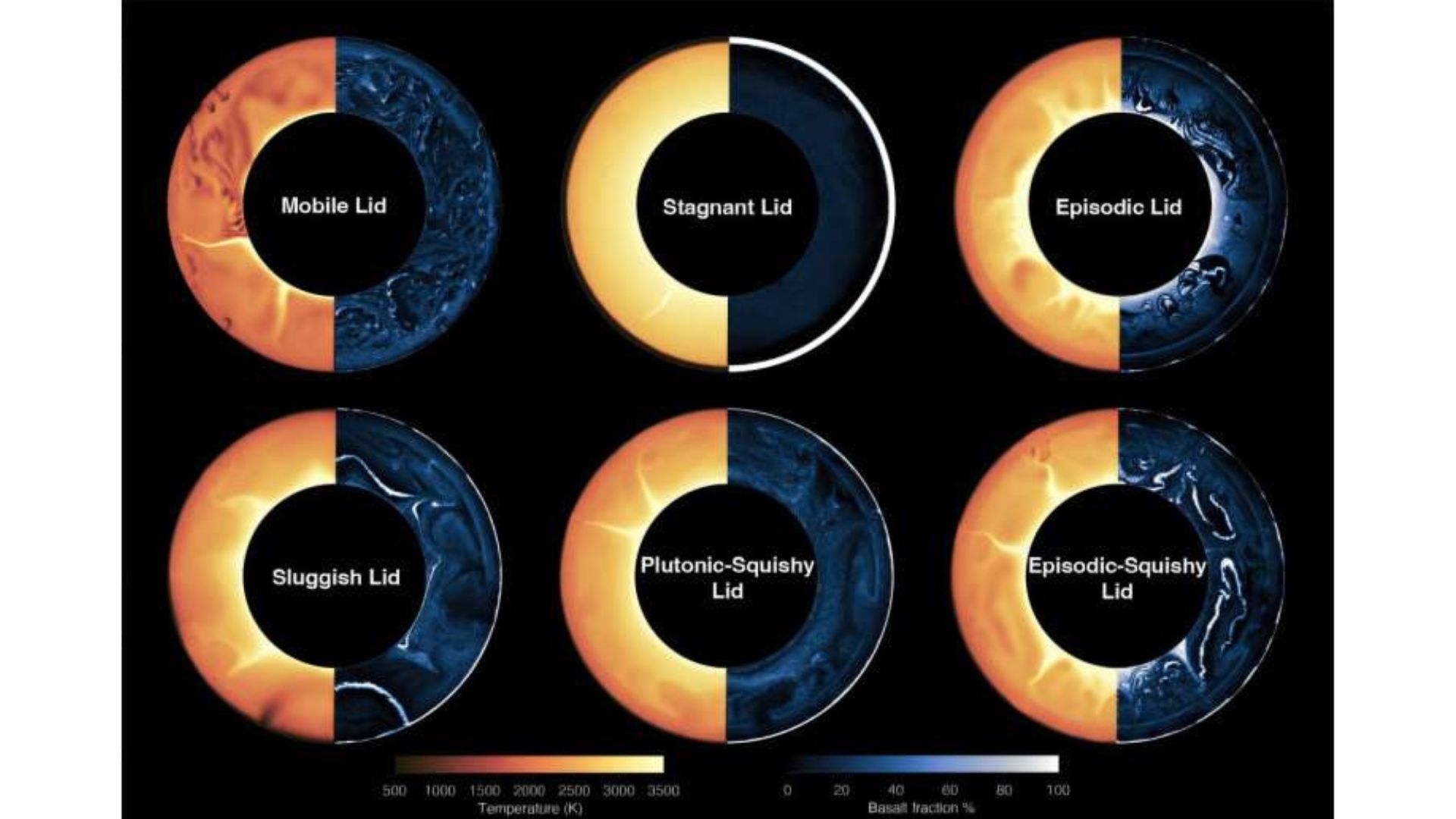Landsat: 20 remarkable photos of Earth (gallery)
Landsat satellites have revolutionized how we view Earth (in more ways than one!)
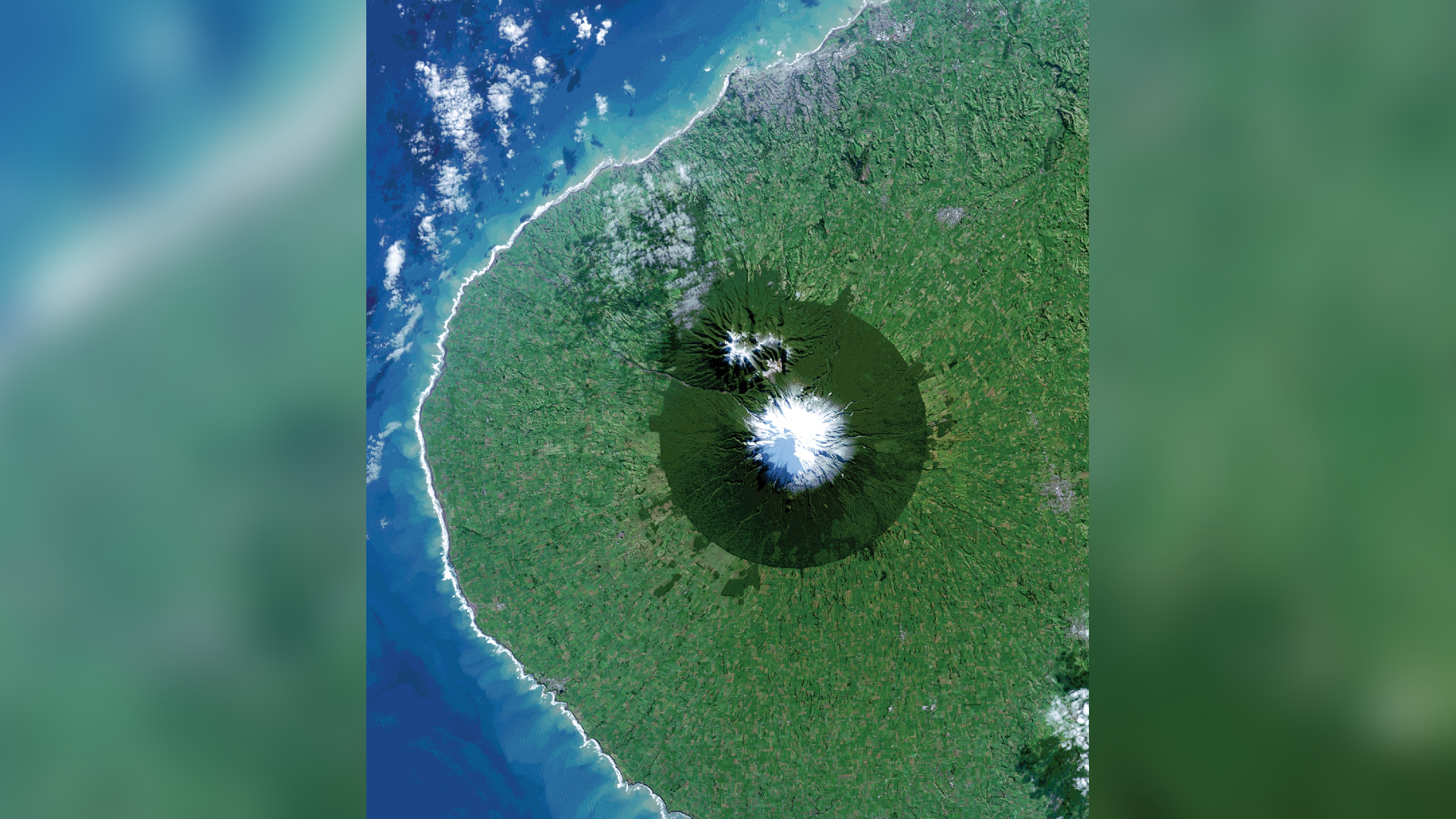
Landsat 1 launched on July 23, 1972, aboard a Delta 900 rocket from Vandenberg Air Force Base, California.
Since then, the fleet of Landsat satellites has grown to eight and revolutionized the way we view our planet.
Landsat presents us with a global view of how Earth is changing, whether from natural causes such as Earthquakes or human-driven change such as urbanization.
The satellite fleet documents everything from retreating glaciers to how much sediment is flowing in rivers. It even helps the United States Department of Agriculture track what crops farmers are growing, field by field!
Related: NASA launches Landsat 9 Earth observation satellite (photos)
This striking image captured by Landsat 8 on July 3, 2014, shows Mt. Taranaki, located in the heart of the Egmont National Park in New Zealand. The snowcapped dormant volcano began forming about 70,000 years ago and last erupted in 1755, according to NASA Earth Observatory.
The Landsat image clearly shows the contrast between protected lush dark green forests that surround the volcano and the once-forested pasturelands, seen here in light brown and green.
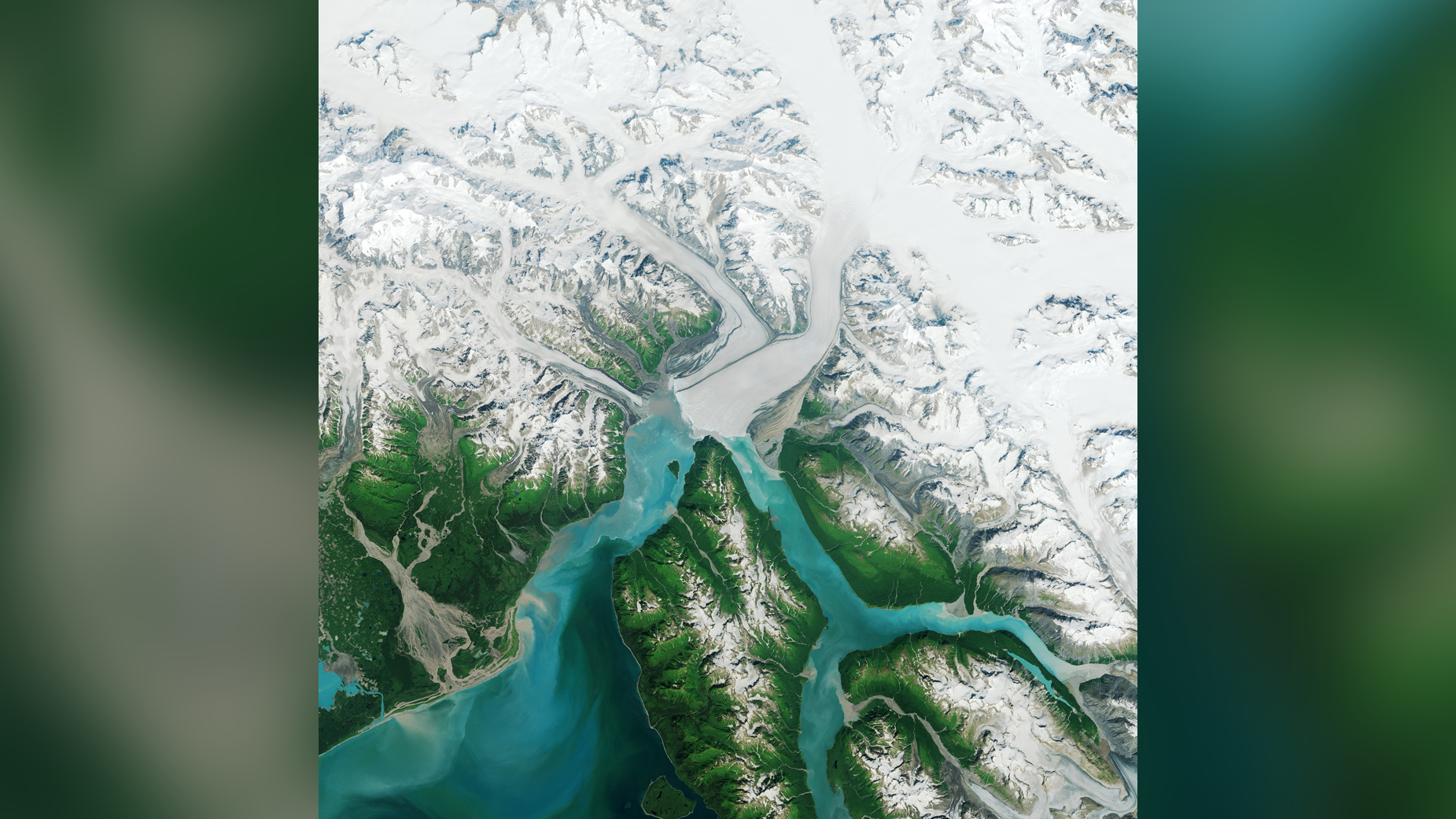
This captivating image of Alaska's Hubbard Glacier advancing into Disenchantment Bay was captured by the Operational Land Imager (OLI) aboard Landsat 8 on July 22, 2014.
Contrary to retreating glaciers in Alaska and all over the world, the Hubbard Glacier is thickening and steadily advancing. In 1986 and 2002 the moraine — debris left behind by a moving glacier — reached Gilbert point and blocked the entrance to Russell Fjord, according to NASA.
The advancement of the Hubbard Glacier is thought to be caused by its large accumulation area, with a large drainage area funneling snow melt to the glacier's terminus — the end of the glacier — thus causing it to grow.
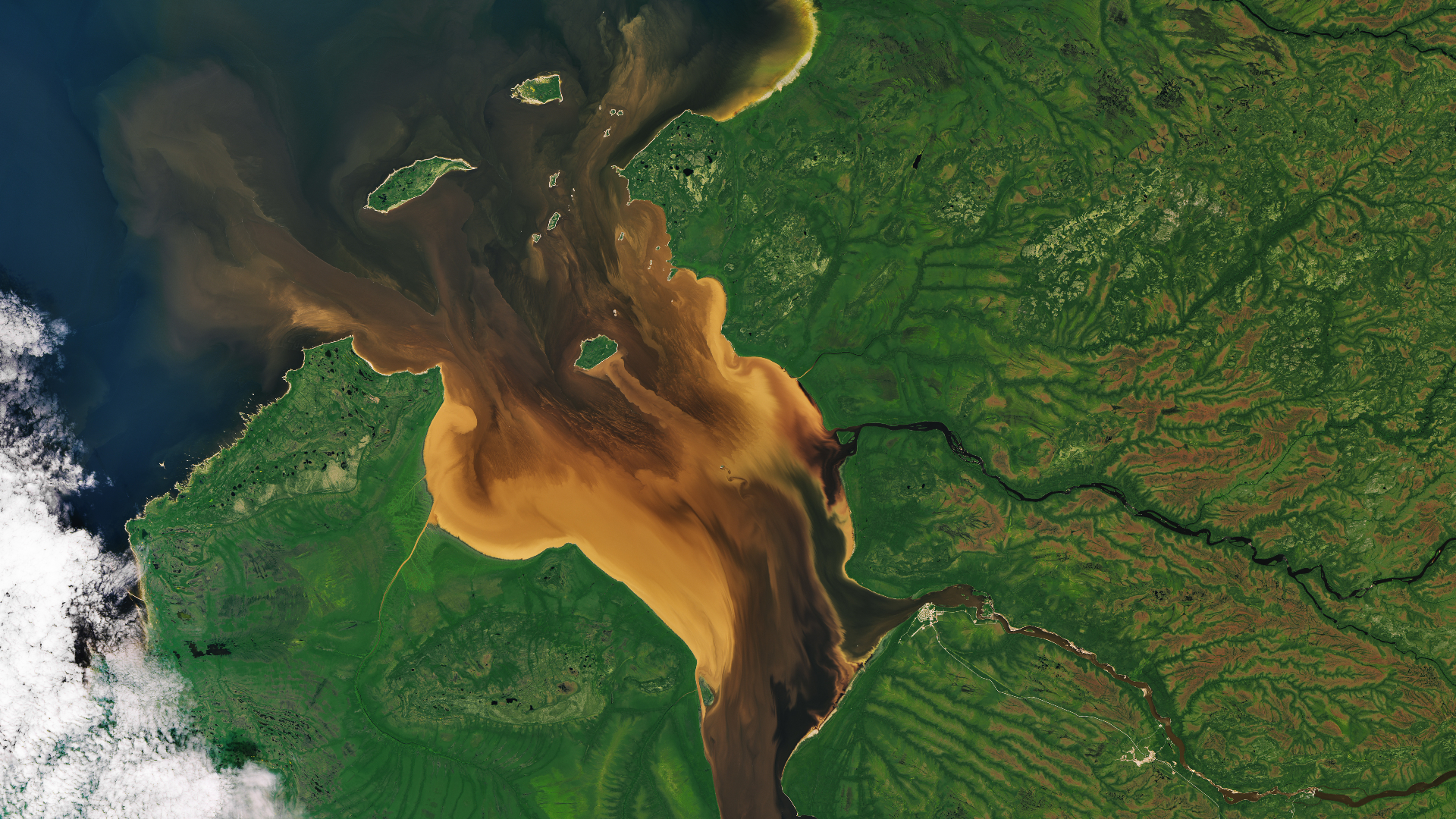
Ever get the feeling that somebody is watching you?
For those of you who are fans of face pareidolia — seeing faces in inanimate objects — this Landsat 9 image of Rupert Bay in Northern Quebec is for you.
Captured on July 30, 2016, the image shows rich, churning tides of coffee-colored water as the river-fed waters of James Bay meet the Hudson Bay inland sea.
The water gets its mocha color from tannins and lignins that are released from plant roots, leaves, bark and soil in the boreal forests and wetlands of Northern Quebec. These tannins and lignins are then washed into the river water, resulting in a murky tea-like appearance.

On May 13, 2017, the Landsat 8 satellite captured a conflict between rivers and glaciers that played out in the Karakoram Mountains of northern Pakistan. Here, the Shimshal Valley is prone to flooding due to the varying speeds at which the glaciers flow.
The glaciers in the valley do not move at a constant rate. Instead, they surge, meaning there are periods where they flow several times faster than normal, according to NASA. The surging glaciers do not have too much room to maneuver and end up intersecting the rivers, where they dam the water and create flood hazards. Floods are triggered when the blocked water eventually breaks through the glacial dam and cascades down the gorge.
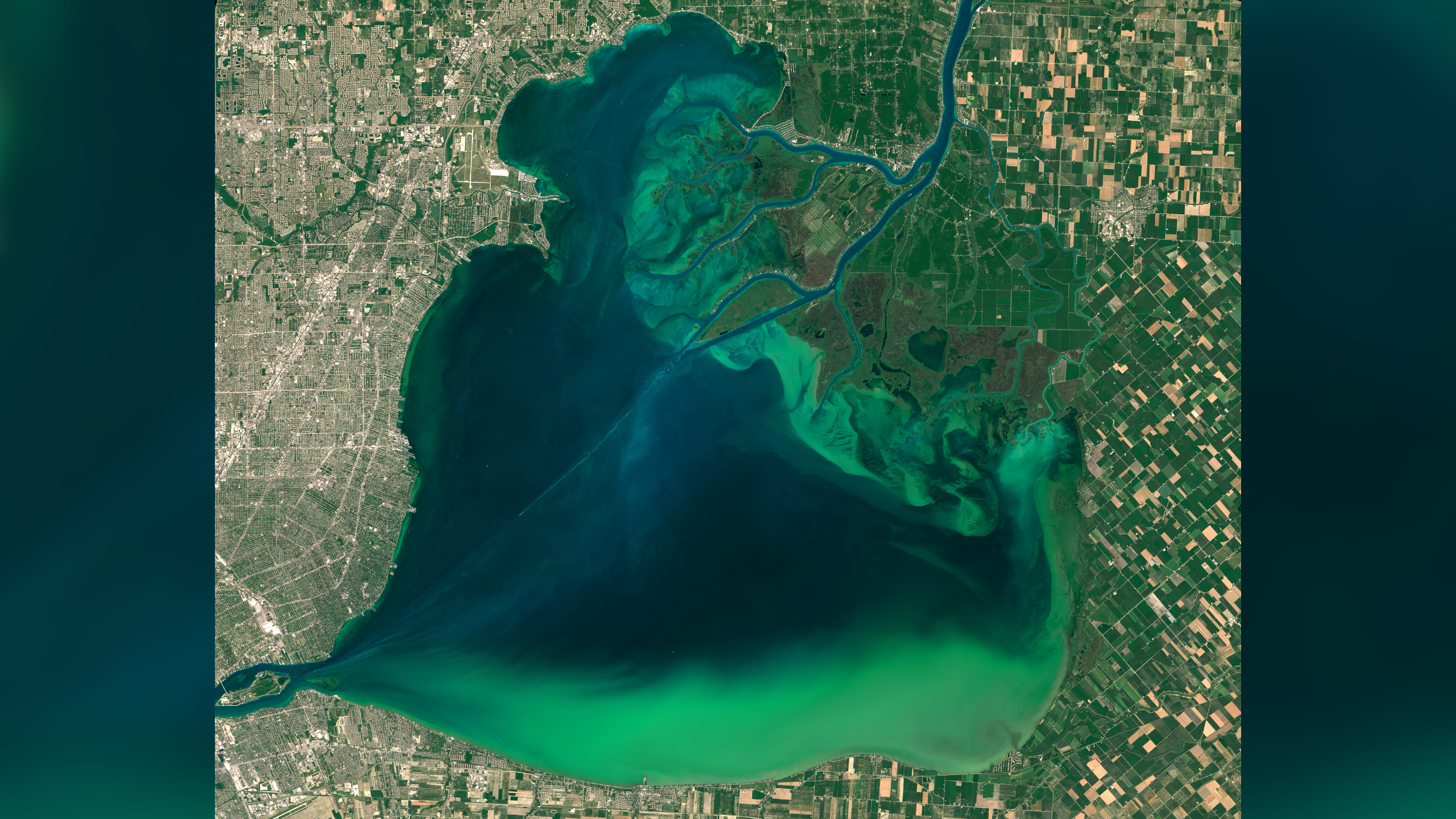
On July 28, 2015, a blooming beautiful sight greeted OLI onboard the Landsat 8 satellite. The mesmerizing scene was caused by flourishing algae in Lake St. Clair.
Algal blooms are often caused by excess nutrients in the water due to agricultural runoff, or due to conditions such as ample sunlight and warm water temperatures. Vast blooms can be seen across many large water bodies throughout the summer, with the peak of the algal bloom season occurring in September, according to NASA.
Though they may look pretty, algal blooms can release toxins that can kill fish, mammals, and birds and can even cause human illness and in extreme cases, death, according to the National Oceanic and Atmospheric Administration (NOAA).
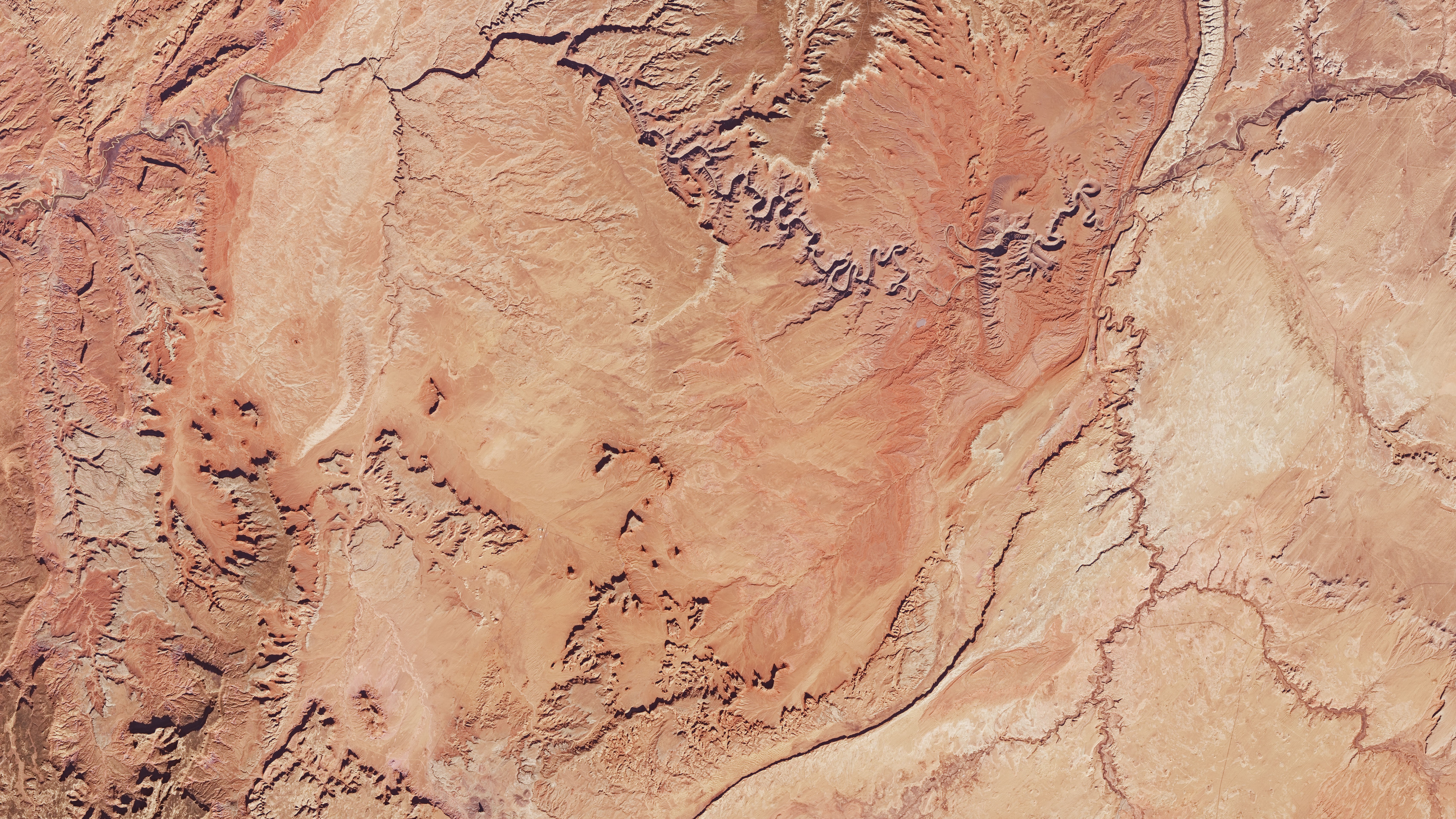
You'd be forgiven for thinking this Martian-red landscape of Monument Valley is a scene from another world. With towering sandstone structures and vast sandy plains, the rugged landscape embodies the essence of the American West and as such, has featured in several John Wayne movies. Coincidently, a similar landscape on Mars has been dubbed "Monument Valley" due to the similarities between the two scenes, according to NASA.
Landsat 8 captured this dramatic image on November 14, 2016. The area formed during the Permian period — between 299 and 251 million years ago — and once was part of the seafloor. Over millions of years, sediments built up and layers of sandstone formed across the landscape. Water and wind chiseled away at the rock, creating the towering pillars that pepper the landscape today.
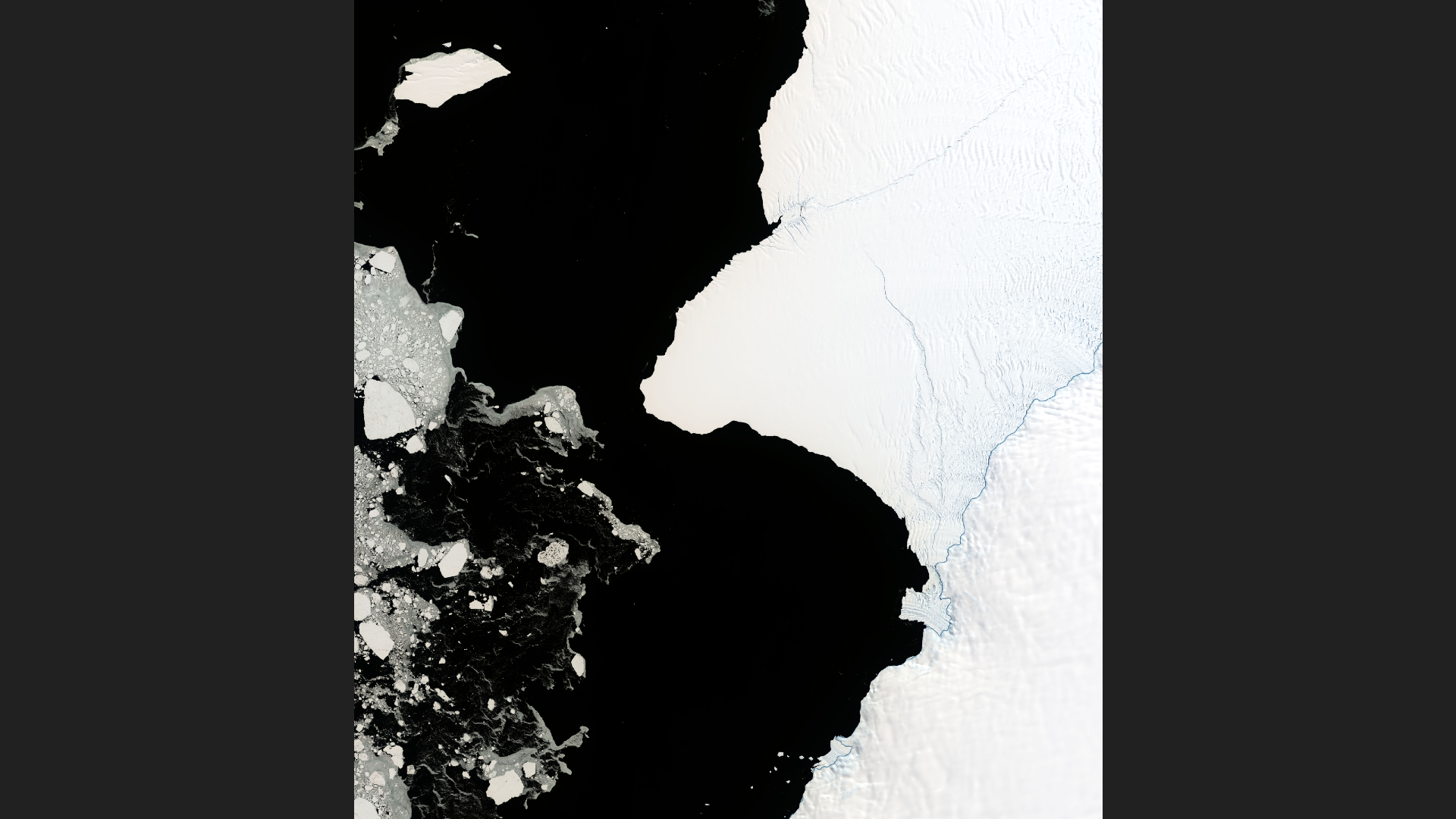
On January 23, 2019, Landsat 8 captured this eye-catching image of Antarctica's Brunt Ice Shelf. Large cracks can be seen forming across the colossal ice sheet which eventually calved a large iceberg in February 2021 as previously reported by our sister site Live Science.
Calving is a normal feature of ice shelves and a natural part of their "life-cycle" but what is alarming is the rate at which these calving events are now occurring. According to NASA, the Brunt Ice Shelf had evolved slowly since Ernest Shackleton surveyed the area in 1915, but in recent years the evolution has been speeding up.
The Brunt Ice Shelf is one of the most heavily monitored ice shelves in the world and is the home of the British Antarctic Survey's (BAS) Halley Research Station. The rapidly changing environment poses a threat to scientific research and infrastructure in the polar region.
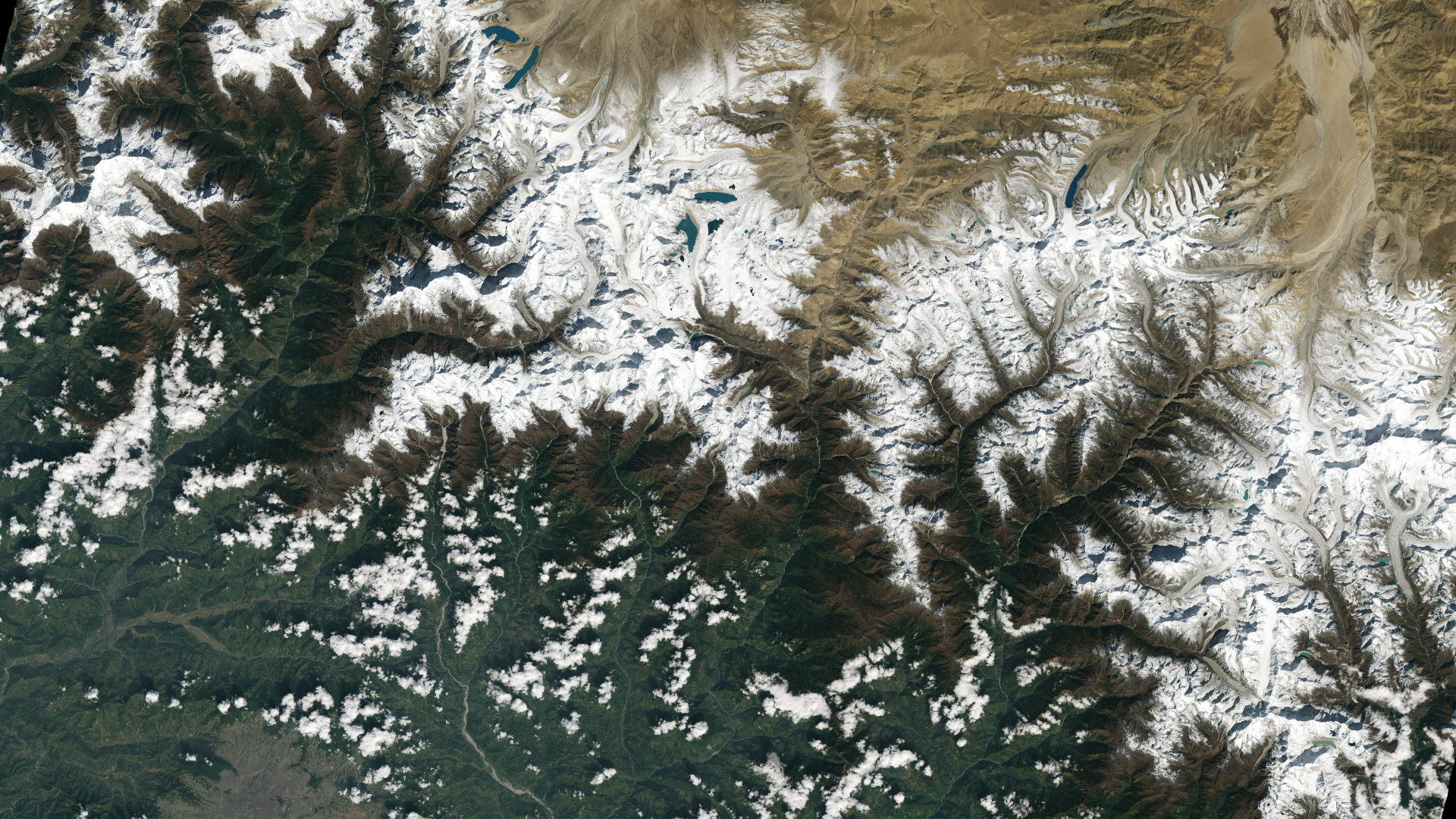
One of the first images captured by the newly launched Landsat 9 satellite shows the snow-capped Himalayan Mountains. The city of Kathmandu, Nepal can be seen in the bottom left of the image. Towards the top of the image, you can see lakes filled with glacial meltwater and the sprawling rivers carving their way down to the valleys below.
Landsat 9 was launched on September 27, 2021, atop a United Launch Alliance Atlas V rocket from the Vandenberg Space Force Base in California. One of the aims of the satellite is to help track how glaciers are shrinking as a result of climate change. This image was captured on the first day of data collection for Landsat 9, October 31, 2021.
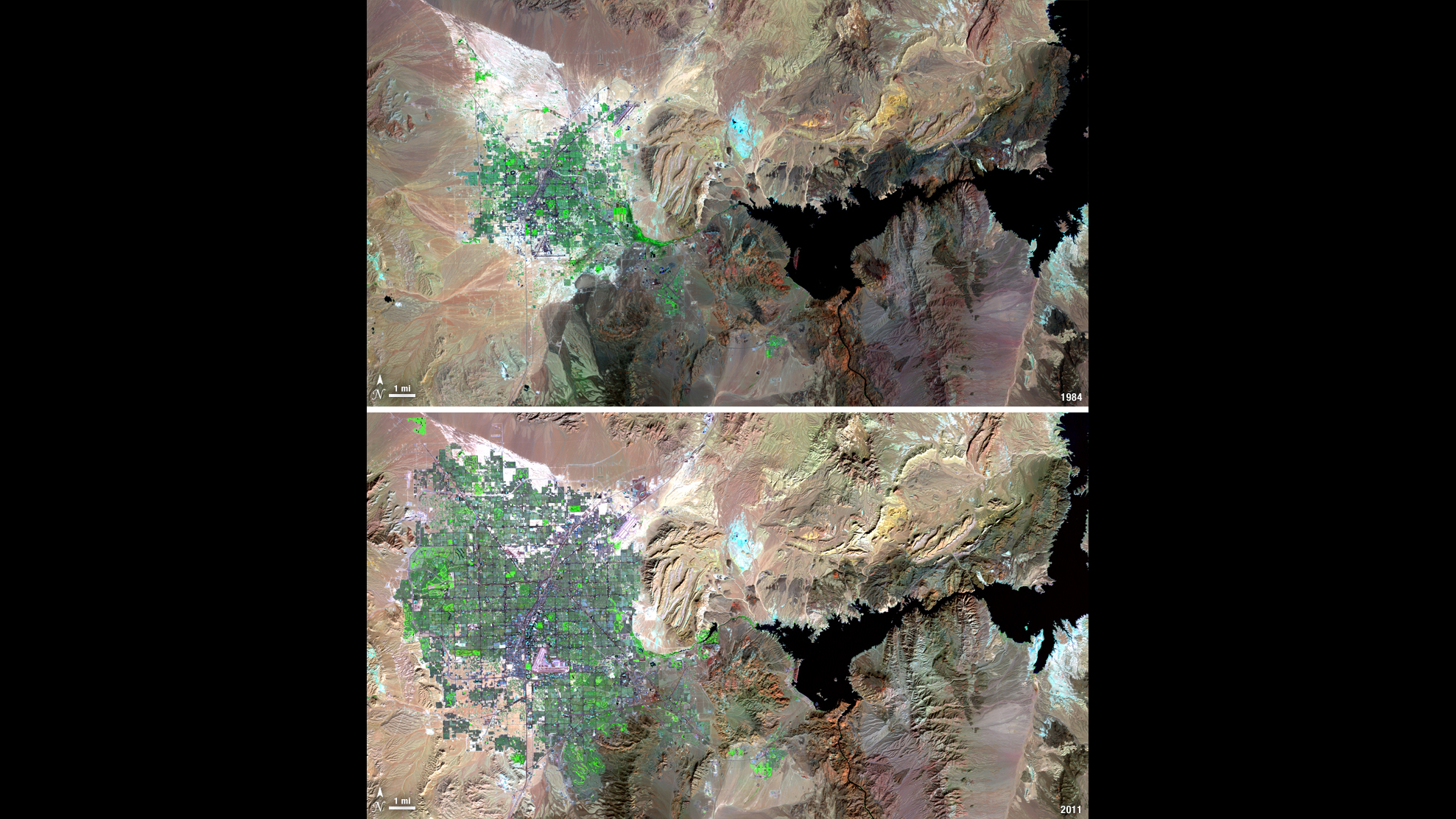
Over the years Landsat has documented the expansion of cities all over the world. One city that has undergone an enormous growth spurt is the desert city of Las Vegas, Nevada in the United States.
The two false-color images captured by Landsat 5 show the urban sprawl reaching far out into the desert. The city grids are shown in purple and irrigated vegetation growth is shown in green. The image at the top was captured on August 3, 1984, and the image at the bottom was taken on November 2, 2011. Las Vegas has undergone significant expansion in recent years and continues to do so, vastly transforming the once-desert landscape.

Africa's vibrant Namib Desert spans more than 10,000 square miles (3 million hectares). This image captured by Landsat 8 on November 13, 2019, shows the Namib Sand Sea — a vast field of sand dunes — come to a rather abrupt halt as it meets the meandering Kuiseb River within the Namib-Naukluft Park.
The sporadic flow of the Kuiseb River depends on the extent of the rainy season which typically occurs from November to March. When the floodwaters reach the river it washes away the sand and temporarily prevents the bright orange dunes from advancing northwards. The dunes get their Martian-red color from the high concentration of iron oxide in the sand.

In this false color image the Columbia Glacier, Alaska, descends from an ice field 10,000 feet (3,050 meters) above sea level. Changes to this glacier were tracked for more than 30 years by Landsat 4, 5, 7 and 8 data, according to a statement from NASA. Rapid glacial retreat has been recorded since 1980 and continues today. Over the last thirty years, the terminus of the glacier has retreated more than 12 miles (20 kilometers) to the north.
This false-color image combines short-wave infrared, near-infrared and green portions of the magnetic spectrum. Snow and ice appear as bright cyan, vegetation is green, clouds are white or light orange and open water appears as dark blue. Exposed bedrock is colored brown and rocky debris on the surface of the glacier is gray.

This wild Sahara Desert scene was captured in a false-color composite image by the Landsat 7 satellite on October 22, 2000. Here, dark rocky outcrops piece through the rusty red landscape near the Terkezi Oasis in Chad.
The Sahara Desert is the largest band of dry land in the world and completely dominates the top third of Africa. It hasn't always been so desolate. About 10,000 years ago the region was home to an abundance of wildlife including lions and elephants when grasses covered the area, according to NASA.
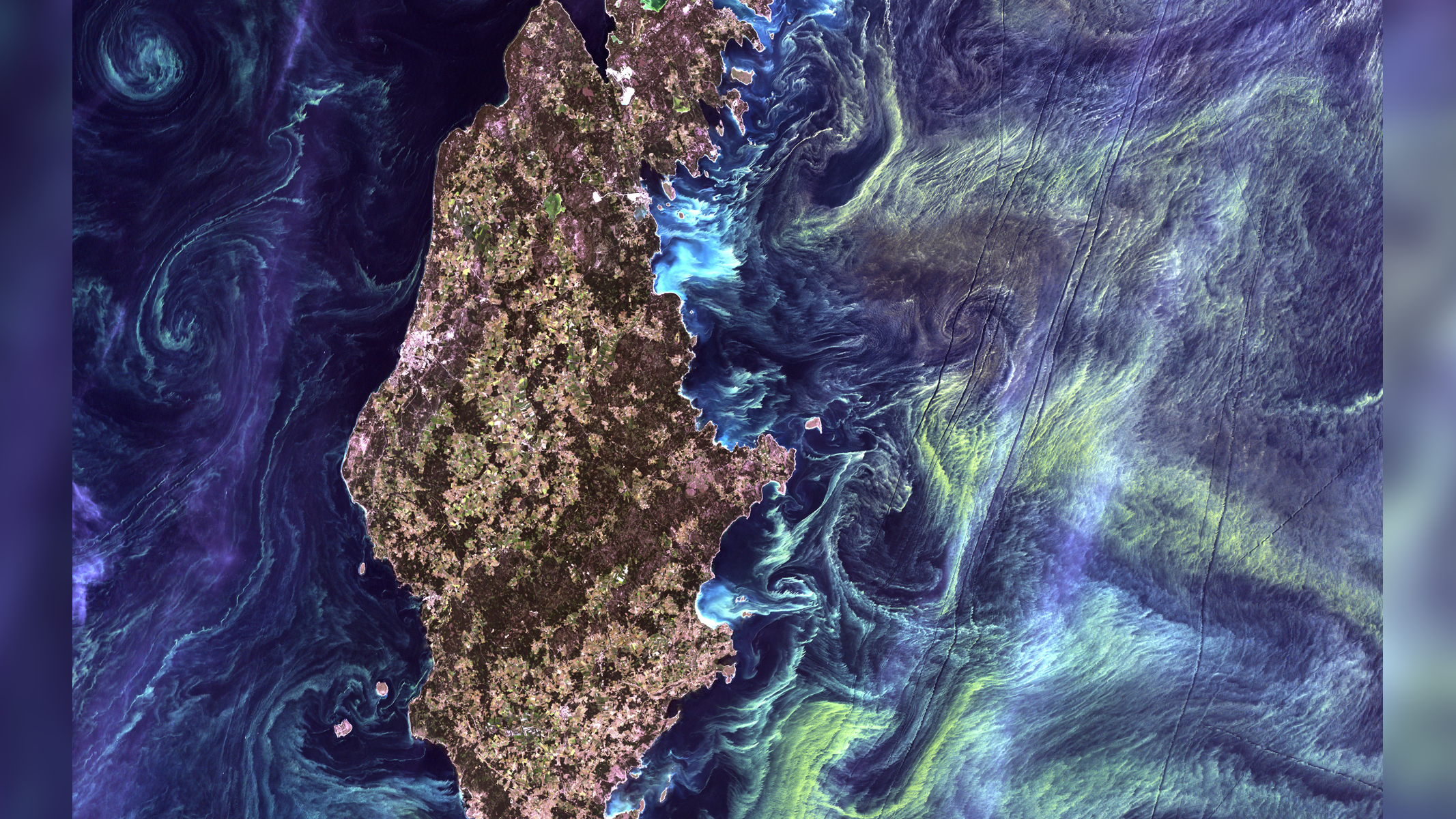
No this isn't another one of Van Gogh's masterpieces but the product of a far simpler organism: Phytoplankton.
Phytoplankton are microscopic plant-like organisms also known as microalgae. They contain chlorophyll and, like plants, photosynthesize to produce the chemical energy needed to grow and live.
Off the coast of the Swedish island Gotland in the Baltic Sea, vast phytoplankton blooms occur when deep ocean currents bring a rich nutrient 'soup' up to the shallow sunlit waters, according to NASA.
This mesmerizing image likened to Van Gogh's "Starry Night" was taken by Landsat 7 on July 13, 2005.
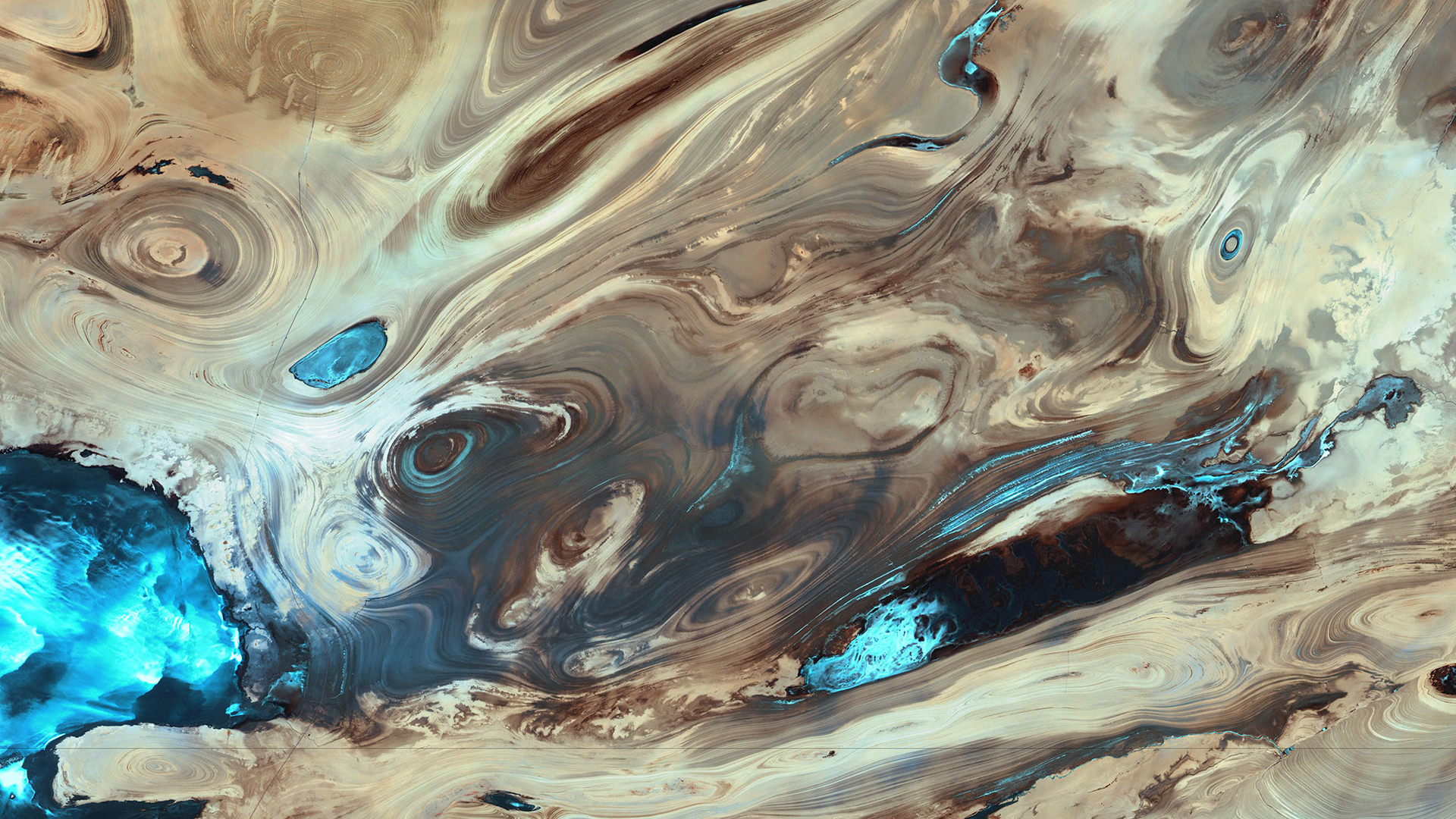
This dramatic swirling scene looks like something we might find on Jupiter, but Landsat 7 captured this false-color composite image on October 24, 2000. This is no Jovian landscape, but the Dasht-e Kevir, or Great Salt Desert in Iran.
The Great Salt Desert is Iran's largest desert and is composed of mud and salt marshes overlain by crusts of salt. But the environment hasn't always been so barren. Tens of millions of years ago a salt-rich ocean once covered this region, according to NASA Earth Observatory.
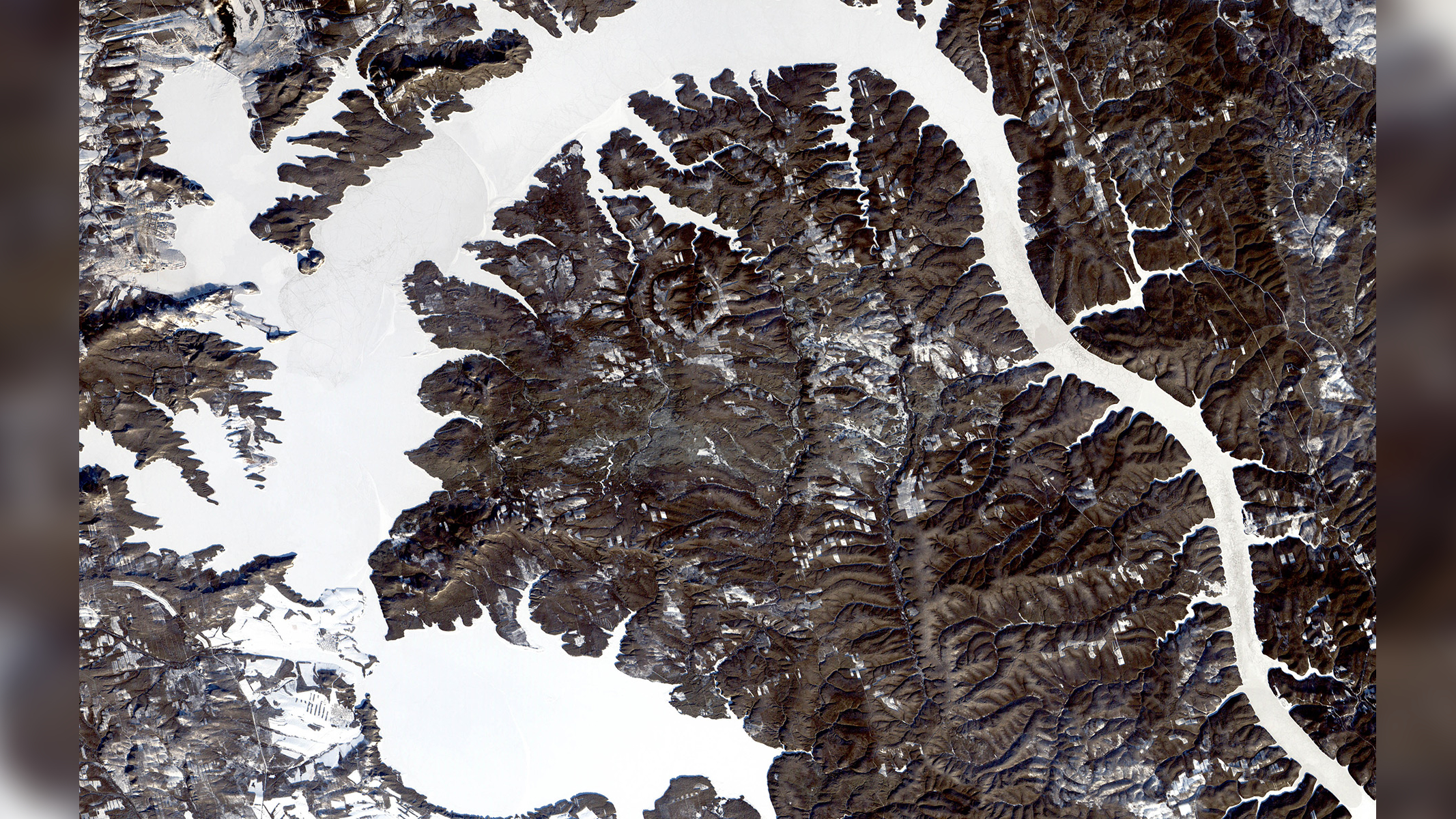
Landsat 7 captured this image of the aptly nicknamed "Dragon Lake" slinking through the Siberian landscape on December 19, 1999.
The lake is formed by the Bratskove Reservoir holding back water along the Angara River in southern Siberia. In winter the lake freezes and the full extent of the "dragon" becomes apparent.

If you thought that Rupert Bay appeared like it was looking at you, Lake Eyre takes things to a whole new (and albeit more terrifying) level. This haunting image was captured by Landsat 5 on August 5, 2006.
Lake Eyre is Australia's largest salt lake and is found deep in the Australian desert. It lies 52 feet (16 meters) below sea level and is only filled with water during heavy rain events, when full it becomes Australia's largest lake. Though this is a rare occurrence as the lake has only been completely filled three times in the last 150 years, according to USGS.
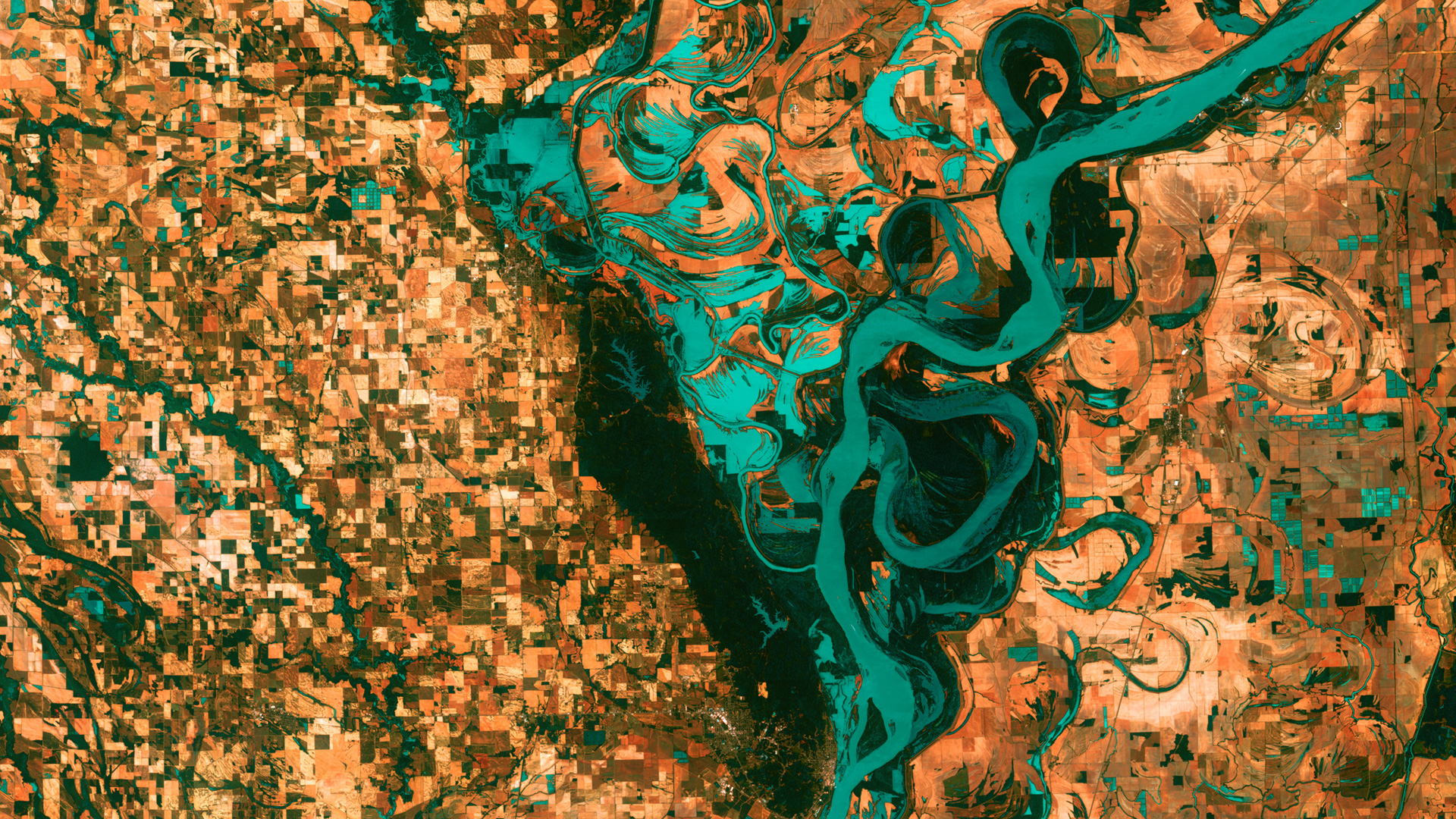
This Landsat 7 image captured on May 28, 2003, shows why the "Mighty Mississippi" lives up to its name. Here, the striking river twists and turns as it cuts through the blocky landscape of towns and agricultural land, south of Memphis, Tennessee.
The Mississippi River flows from its source at Lake Itasca through Northern America and to the Gulf of Mexico. It is the second longest river in North America according to the National Parks Service.

Following on from the previous image and the beauty of the Mississippi, this captivating image shows the silt deposited from the mighty river into the Gulf of Mexico, off the southern coast of Louisiana.
The image was captured by the Landsat 7 satellite on December 28, 2002.
If you look carefully you can spot fishing boats and oil platforms appearing as bright dots in the image.

This spectacular icescape image of the Anzhu Islands (a subgroup of the North Siberian Islands) in the Arctic Ocean highlights the beauty of this perpetually changing landscape.
According to NASA Earth Observatory, the appearance of the ice can change on a daily basis as it's transformed by ocean currents and winds. At the heart of the image is the Laptev Sea located just west of Kotelny Island. During the month of June, the Siberian Islands undergo a massive transformation as snow and ice give way to bare land during the annual surface melt.
The image was captured by Landsat 8 on June 9, 2016.
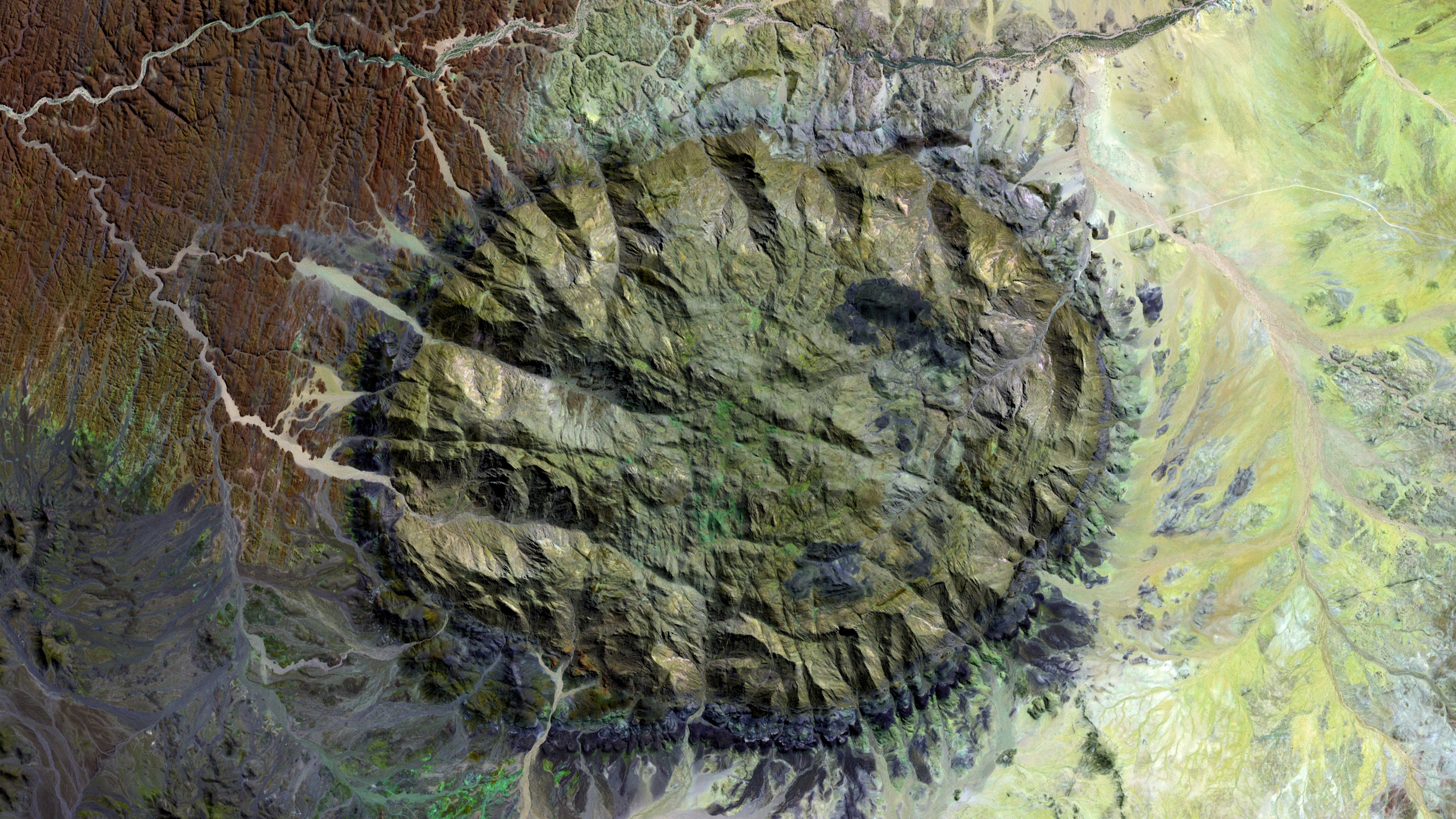
Known as Daures, or "the burning mountain" by Namibians, the Brandberg Massif is an imposing feature of the Namib Desert landscape in northern Namibia. According to a NASA statement, Brandberg formed over 120 million years ago when a large granite mass 'punched' through Earth's crust during the splitting apart of the ancient supercontinent of Gondwana.
Brandberg is Namibia's highest mountain and home to unique plants and animals that thrive in a high-altitude environment. It is also of great cultural significance and hosts a wealth of prehistoric rock art according to UNESCO.org. There are more than 43,000 paintings and 900 sites alone!

Daisy Dobrijevic joined Space.com in February 2022 having previously worked for our sister publication All About Space magazine as a staff writer. Before joining us, Daisy completed an editorial internship with the BBC Sky at Night Magazine and worked at the National Space Centre in Leicester, U.K., where she enjoyed communicating space science to the public. In 2021, Daisy completed a PhD in plant physiology and also holds a Master's in Environmental Science, she is currently based in Nottingham, U.K. Daisy is passionate about all things space, with a penchant for solar activity and space weather. She has a strong interest in astrotourism and loves nothing more than a good northern lights chase!
